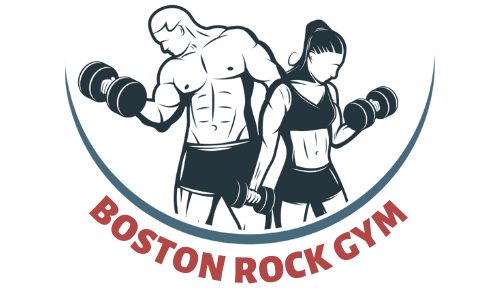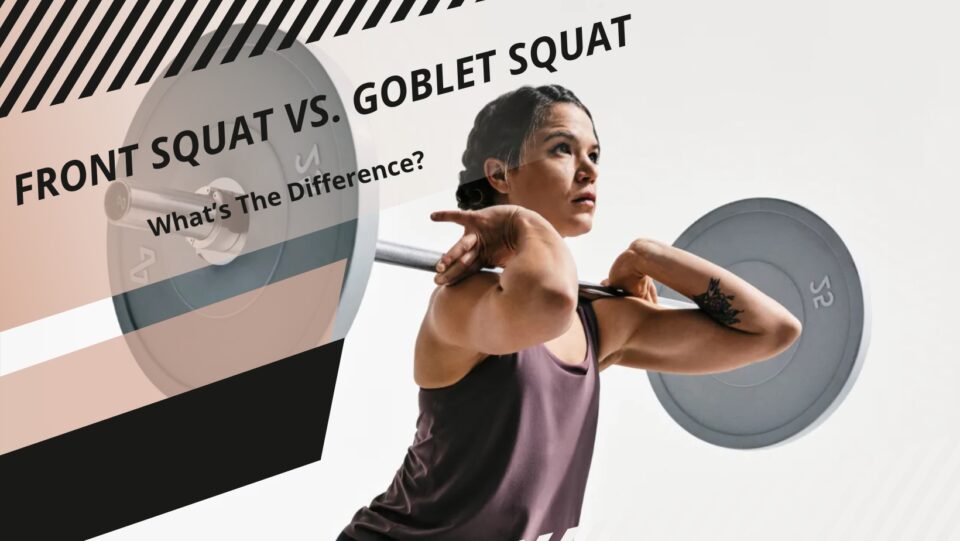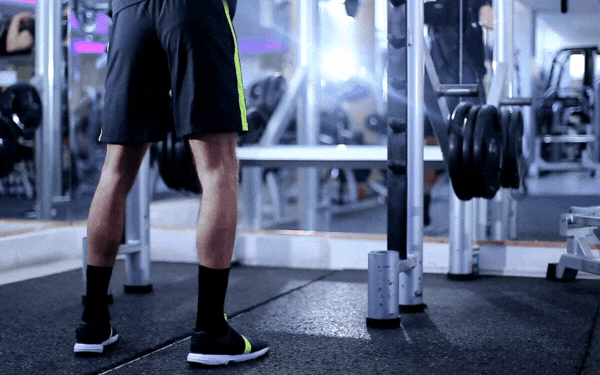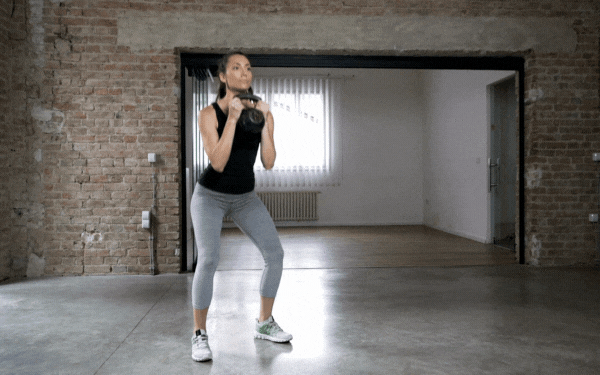There are a ton of different squat exercises you may perform at the gym. The front squat and goblet squat are two of the most often used front-loaded squat variants. However, before you decide which exercise would work best for you and your needs, you need to learn as much as you can about them.
That way, you’ll know whether to try them and avoid wasting time doing something that doesn’t lead up to achieving your gym goals. So, let’s go through the distinctions between these two squat variations and learn what the advantages of choosing one over the other are!
Contents
Front Squats
Front squats are a variation of the typical back squat workout. They have many of the same advantages, such as strengthening the lower body’s power and strength and enhancing balance and coordination. Contrary to back squats, front squats provide a few more advantages.
Front squats activate the core muscles more since the barbell is held in front of the body, which helps to increase core stability and posture. Additionally, front squats can aid in increasing hip, ankle, and wrist mobility.
The mechanics of the air squat are precisely what the front squat builds on. The only thing added is a load held in the front-rack position, where the weight is evenly distributed across the upper chest and shoulders and the elbows are pointing forward to make the upper arms parallel to the floor.
With the load being carried by the torso in this crucial “rack posture,” which is also essential for weightlifting, wrist, as well as shoulder flexibility are both demanded and improved.
Goblet Squats
The goblet squat is a fantastic all-around workout that strengthens your muscles (especially your legs, core, and glutes) and improves your cardio fitness. The exercise may be used by athletes of all skill levels as a good warm-up before a lower body workout or as a stepping stone to a weighted front squat with a barbell.
The goblet squat targets all the major muscle groups of the lower body in a complex motion, as do all squats. This replicates actions like getting up from a chair, getting out of bed in the morning, or crouching down to pick something up from the lowest shelf at the grocery store, which transfers well to everyday practical motions.
To maintain appropriate posture and balance when performing a goblet squat with a weight in front of the chest, the core muscles must be used.
The upper back, shoulders, and arms are also engaged and worked when holding a weight in front of the chest. The Goblet Squat is a less complicated squatting exercise that enables people to concentrate on appropriate form and technique, which helps improve form and technique when executing more difficult squatting exercises.
They are very flexible and can be carried out at home or at the gym, and they may be carried out with a range of equipment, such as dumbbells, kettlebells, and even sandbags. Goblet squats are a wonderful workout for beginners since they are reasonably simple to do and understand.
Front Squats Vs. Goblet Squats – Key Differences
The front squat and the goblet squat are two of the most popular squat variants. You’ve probably heard about both of them and perhaps even done them. If you’re still wondering whether one of them is better than the other and what the key differences between them are, we’re here to shed some light on the matter!
In the front rack position, the front squat is loaded with a barbell on the shoulders. In contrast, a dumbbell or kettlebell is used to load the goblet squat when it is in the goblet position in front of the chest. Front squats are excellent for increasing strength and muscle, whereas goblet squats are ideal for beginners learning how to squat. Additionally, you can check liftbigeatbig.com for more advices which ones to use and what are the best exercises that go with each of the goblets.
Although front squats and goblet squats are both squatting exercises, they cannot be substituted for one another in a training routine. They provide fundamentally different inputs, mostly as a result of the key distinctions explained below:
1. Equipment
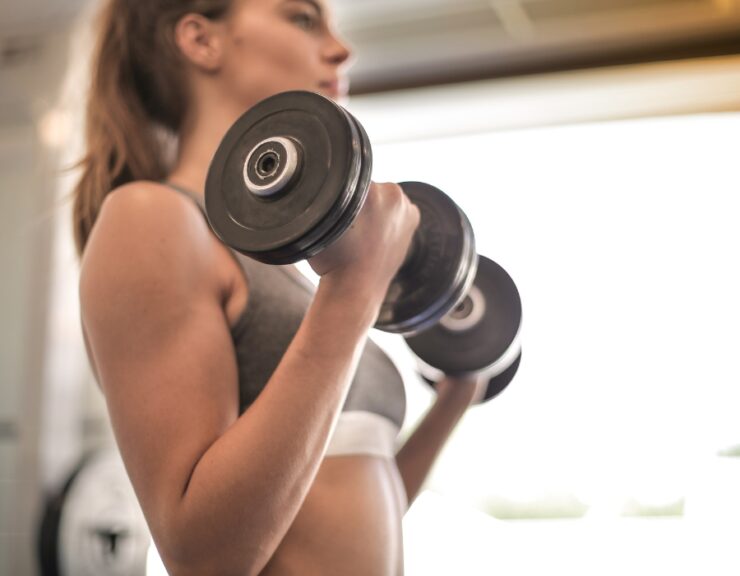
The goblet squat and front squat both load in front of the body but the goblet squat loads with a dumbbell or kettlebell, whereas the front squat loads with a barbell. It is gripped in the hands like a large goblet, whether it be a dumbbell or kettlebell.
For the front squat, the front rack position places the barbell on the shoulders. For this reason, if you just have access to basic equipment, the goblet squat is a more practical workout.
2. Muscles Targeted
The quadriceps are largely loaded in both the goblet squat and front squat, with the glutes, hamstrings, and inner thigh supporting the exercise as a whole. To maintain the torso angle when squatting, the front squat will need substantially more strength in the mid-back, upper back, and core.
This is due to the fact that the front squat requires an upright torso angle in order to maintain the barbell’s optimal position on the shoulders without running the danger of it slipping off. You can produce a little bit more forward torso lean in the goblet squat without the weight shifting having as big of an impact.
As a result, compared to the front squat, your back, and core muscles aren’t as targeted.
3. Mobility

The front squat and goblet squat both need equal levels of lower body mobility. Ankle and hip mobility are of vital significance to getting into a deep squat position. Contrary to the goblet squat, the front squat necessitates significant upper-body mobility.
When holding the barbell on their shoulders with a clean grip, many weightlifters experience difficulty with their front rack mobility. Strong triceps length, wrist mobility, and external rotation of the shoulder are necessary. A cross grip can be used to resolve this.
However, thoracic mobility is another problem that develops with front squats. Those who have kyphotic posture or have trouble extending their thoracic spine will find it difficult to maintain the barbell in the rack position as they lower themselves into the squat. The goblet squat allows for increased upper-body mobility and can be performed with or without a small forward lean.
4. Loading
With the upper back and core supporting the weight in the front rack position, the front squat enables the use of bigger weights. In contrast, the goblet squat uses the arms to support the weight. Because the upper back is significantly stronger than the arms, weights may be carried much more heavily.
As a result, front squatting, as opposed to goblet squatting, might put additional strain on the leg muscles. Nevertheless, there are ways to keep adding weight to the goblet squat even after your arms can no longer carry bigger dumbbells or kettlebells. An approach is to put on a weighted vest. Another more aggressive technique is to wrap heavy chains around your neck.
5. Skill Level

The synchronization of several muscle groups and joints is required for every squat variant, making it a complicated movement pattern. As a result, someone trying to do squats has to have excellent balance and motor control. The front squat is ideal for individuals who want to significantly increase their overall strength, bulk up their quadriceps and glutes, or improve their athletic performance.
Having said that, the front squat is a trickier exercise than the goblet squat. This is due to the fact that the front squat has a smaller margin for error since any adjustment might cause the barbell to fall from the shoulders to the floor.
Because you may shift the weight and your body position more freely and without needing to be concerned about the weight slipping from your shoulders as in the front squat, the goblet squat does not carry the same amount of risk. So the goblet squat is a safer action if you’re not as technically adept in the squat yet.
6. Weights
There is a maximum weight you can load for the goblet squat because it is a dumbbell variant. You’ll eventually reach the heaviest dumbbell in your gym and be unable to move to any bigger loads.
The goblet squat is severely constrained by the inability to advance the weight, even if you may add additional sets and reps to keep improving. On the other hand, you are not constrained in your ability to increase weight progressions as long as the front squat is loaded with the barbell.
Conclusion
The front squat and goblet squat each have a specific function. The goblet squat is essentially no good for the lifter wanting to add muscle and develop incredible strength once they are beyond the basic stage of learning the squat.
That is why you should be careful and think about which of these two squat variants to do according to the goal(s) you’ve set for yourself. Make sure you pick the right exercise and go slowly. Don’t overwork yourself—-take it one step at a time and you’ll end up with guaranteed excellent results!
